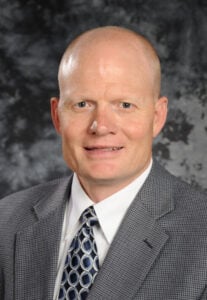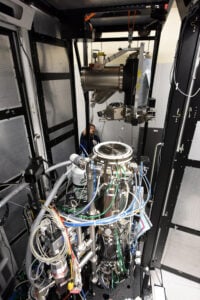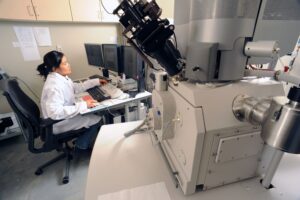Geochemistry Laboratory
This Geoscience-based laboratory is focused on geological systems and applications.
The Geochemistry Laboratory hosts research on enhanced geothermal energy systems – a technology in which fluid is injected into hot, dry rock that has been fractured to extract heat that can be used to generate power. This large-scale geologic thermal energy storage (GeoTES) could provide grid resiliency while facilitating larger penetration of renewable energy sources.
CAES researchers also are studying how to improve the accuracy of geothermal reservoir temperature predictions to save on energy exploration costs.
The Geochemistry Lab contains high pressure and temperature “reactors” for testing a variety of reservoir rocks and fluids at formation-relevant temperatures and pressures. These formation fluids and rocks play a critical role in the development of strategies to cut greenhouse gas emissions.
The lab lead, INL researcher Travis McLing, is an expert in the fields of geologic mapping, carbon sequestration, geomicrobiology and hydrochemistry, and has developed geochemical models to aid in the characterization of CO2 transport at potential storage sites.
Quick Facts
- CAES researchers are studying how to use large-scale geologic thermal energy storage (GeoTES) to provide grid resiliency while facilitating larger penetration of renewable energy sources
- Researchers evaluate several subsurface characteristics when identifying a potential site for Enhanced Geothermal Systems (EGS), including temperature, rock permeability and mechanical properties, earth stress directions and fluid
- Researchers in the Fluids Lab are studying enhanced geothermal systems, carbon sequestration methods to capture and contain CO2, one of the primary greenhouse gases
- They are also studying how to improve the accuracy of geothermal reservoir temperature predictions to save on energy exploration cost
Research
Carbon Sequestration
Additional Research
The potential of this process is huge, “…basalt makes up about 65 percent of the Earth’s crust.” According to a recent paper in the journal Energy Procedia, the Juan de Fuca tectonic plate off the United States’ northwest coast could hold up 700 billion tons of CO2 by itself far more than the 33 billion tons produced by humans every year.
- CAES researchers studied a naturally occurring CO2 system located near Soda Springs, Idaho to better understand how the gas moves through the subsurface, and its impact on groundwater resources
- CAES/INL scientists are members of the Big Sky Carbon Sequestration Partnership, one of the U.S. Department of Energy’s seven regional carbon sequestration consortiums
- Researchers are working to improve the accuracy of geothermal reservoir temperature predictions, which could help reduce geothermal exploration costs
Lab News
Advanced Visualization Lab Publishes 15-Year Study
Researchers in the CAES Applied Visualization Lab (AVL) recently published...
Read MoreIdaho National Laboratory and Colorado School of Mines expand research partnership
Idaho National Laboratory (INL) and the Colorado School of Mines...
Read MoreCAES hosts VIPs from Ohio State University
CAES hosted a great visit by Ohio State University’s Center...
Read MoreMaCS Seed Grant Program Awards up to $5K each
The Center for Advanced Energy Studies (CAES) is pleased to...
Read More








